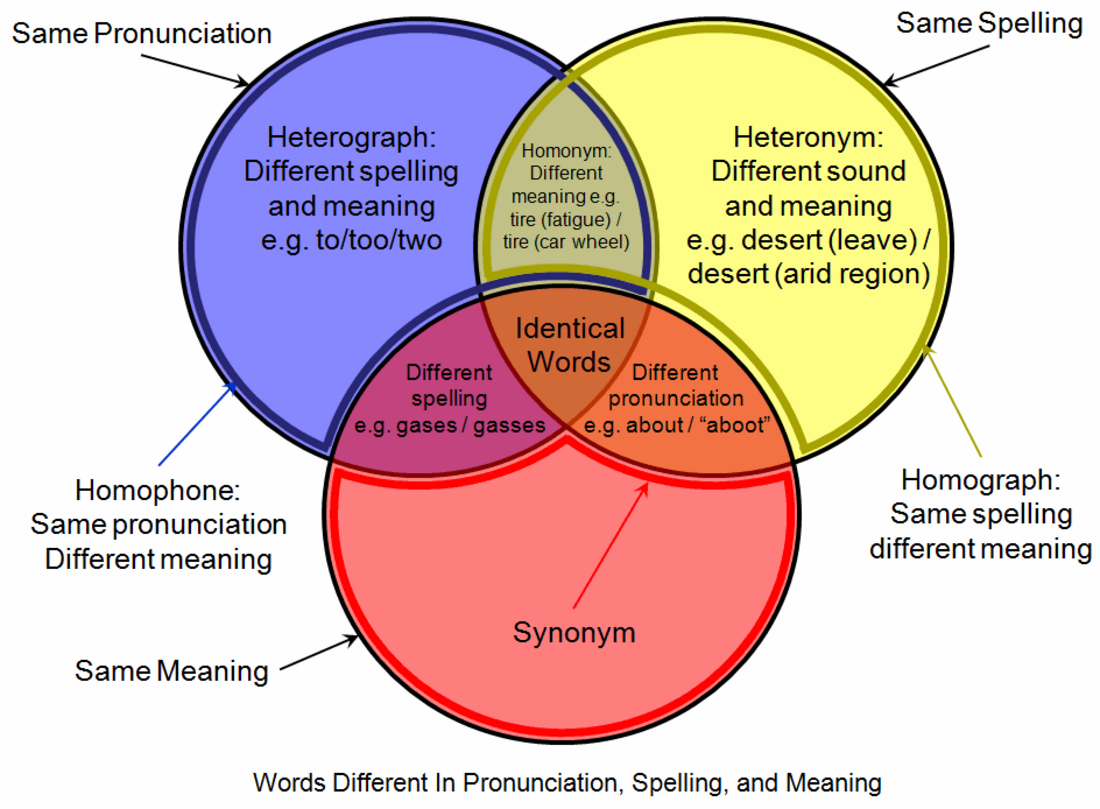Top Qs
Timeline
Chat
Perspective
Homograph
Distinct words with identical written forms From Wikipedia, the free encyclopedia
Remove ads
A homograph (from the Greek: ὁμός, homós 'same' and γράφω, gráphō 'write') is a word that shares the same written form as another word but has a different meaning.[1] However, some dictionaries insist that the words must also be pronounced differently,[2] while the Oxford English Dictionary says that the words should also be of "different origin".[3] In this vein, The Oxford Guide to Practical Lexicography lists various types of homographs, including those in which the words are discriminated by being in a different word class, such as hit, the verb to strike, and hit, the noun a strike.[4]
The examples and perspective in this article deal primarily with the English language and the Chinese language and do not represent a worldwide view of the subject. (September 2018) |

If, when spoken, the meanings may be distinguished by different pronunciations, the words are also heteronyms. Words with the same writing and pronunciation (i.e. are both homographs and homophones) are considered homonyms. However, in a broader sense the term "homonym" may be applied to words with the same writing or pronunciation. Homograph disambiguation is critically important in speech synthesis, natural language processing and other fields. Identically written different senses of what is judged to be fundamentally the same word are called polysemes; for example, wood (substance) and wood (area covered with trees).
Remove ads
In English
Summarize
Perspective
Examples:
- sow (verb) /soʊ/ – to plant seed
- sow (noun) /saʊ/ – female pig
where the words are heteronyms, spelt identically but pronounced differently. Here confusion is not possible in spoken language but could occur in written language.
- bear (verb) – to support or carry
- bear (noun) – the animal
where the words are homonyms, identical in spelling and pronunciation (/bɛər/), but different in meaning and grammatical function.
The above examples are of etymologically unrelated words. Some homographs are also etymological doublets, meaning they come from the same source and are spelt the same way in Modern English, but their distinct meanings are tied to their distinct pronunciations:
- Dominican /dəˈmɪnɪkən/ – of the Dominican Order or the Dominican Republic (fully anglicized, based on the Latin pronunciation of Dominicus [dɔˈmɪnɪkʊs], named for Saint Dominic)
- Dominican /ˌdɒmɪˈniːkən/ – of Dominica (slightly modified from the Spanish pronunciation of Dominica [ðomiˈnika], named for Latin diēs Dominica [ˈdjjɛːs dɔˈmɪnɪka] meaning "the Lord's Day" or "Sunday")
Both words ultimately come from Latin dominicus [dɔˈmɪnɪkʊs] meaning "of the Lord."
- violist /ˈvaɪəlɪst/ – viol player
- violist /viˈoʊlɪst/ – viola player
Both viol and viola come from Latin vitula.
More examples
Remove ads
In Chinese
Summarize
Perspective
Many Chinese varieties have homographs, called 多音字 (pinyin: duōyīnzì) or 重形字 (pinyin: chóngxíngzì), 破音字 (pinyin: pòyīnzì).
Old Chinese
Modern study of Old Chinese has found patterns that suggest a system of affixes.[5] One pattern is the addition of the prefix /*ɦ/, which turns transitive verbs into intransitive or passives in some cases:[6]
Another pattern is the use of a /*s/ suffix, which seems to create nouns from verbs or verbs from nouns:[6]
Middle Chinese
Many homographs in Old Chinese also exist in Middle Chinese. Examples of homographs in Middle Chinese are:
Modern Chinese
Many homographs in Old Chinese and Middle Chinese also exist in modern Chinese varieties. Homographs which did not exist in Old Chinese or Middle Chinese often come into existence due to differences between literary and colloquial readings of Chinese characters. Other homographs may have been created due to merging two different characters into the same glyph during script reform (See Simplified Chinese characters and Shinjitai).
Some examples of homographs in Cantonese from Middle Chinese are:
Remove ads
See also
Bibliography
- Drury, Donald A. (1969). "Homographs and Pseudo-Homographs". Word Ways. 2 (3): 146–154.
- Ryan, William M. (1968). "Affixes and the Making of Homographs and Homonyms". American Speech. 43 (2): 138–141. doi:10.2307/454547. ISSN 0003-1283.
References
External links
Wikiwand - on
Seamless Wikipedia browsing. On steroids.
Remove ads
